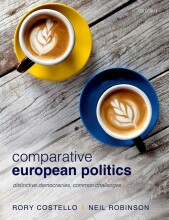Wilkins, V. M., & Williams, B. N. (2008). Black or blue: Racial profiling and representative bureaucracy. Public Administration Review, 68, 654-664
12 important questions on Wilkins, V. M., & Williams, B. N. (2008). Black or blue: Racial profiling and representative bureaucracy. Public Administration Review, 68, 654-664
What has been shown in previous literature and will in this article be tested?
How has contemporary racial profiling been cited as a police tactic whose practical origins are related to Reagan's War on Drugs?
Although the authors acknowledge that it is difficult to prove the discriminatory practices, what is more important than the solid proof according to them?
- Higher grades + faster learning
- Never study anything twice
- 100% sure, 100% understanding
What is the theory of representative bureaucracy?
What is the difference between passive and active representation?
Active = how representation influences policy making and implementation; do they purposely act on behalf of their counterparts in the general population?
Which two conditions have to be met for passive representation to naturally translate into active representation?
The policy area must be salient to the demographic group in question
How is active representation made almost impossible for minority bureaucrats?
What is the difference between formal and informal socialization processes?
What was the method of this study?
What do the authors improve regarding the dependent variable where the relationship between the percentage of stops where the driver is black vs the black community in the area?
What is the meaning of the title: "Black or Blue"?
What are the control variables in this study?
The question on the page originate from the summary of the following study material:
- A unique study and practice tool
- Never study anything twice again
- Get the grades you hope for
- 100% sure, 100% understanding





























